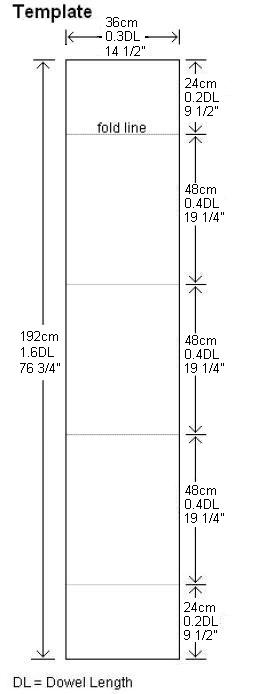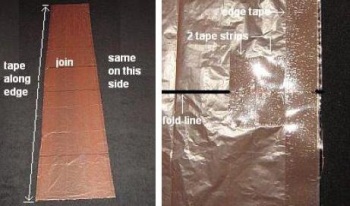- Home Page
- Better Kites
- ... Box Kite
Making a Box Kite
Step by Step—Page 1 of 3
MBK Dowel Box (mod. winds)
This set of instructions on making a box kite assumes you know absolutely nothing about kite building. You might already have some of the simple tools and materials required. Anything you don't have is easily bought. If it's not exactly what I used, then at least something pretty similar!
 MBK Dowel Box
MBK Dowel Box(moderate winds)
The instructions on how to make a box kite might look quite long, but each step is simple to do. Just quickly work your way through from top to bottom, skimming over any detail that you don't need.
The Dowel Box (moderate-wind version) is a 1.2 meter (4 feet) long design that is very similar to the traditional box. This design flies best in moderate winds but will also stay in the air in wind strengths below and slightly above this range.
The Dowel Box is designed to roll up into a slim cylindrical package like a sled, thanks to the detachable cross-pieces. Setting up on the flying field takes a few minutes at first but gets quicker with practice.
Also, it's handy to set up in a spot that is sheltered from the wind. Of course, if you have room, you can always leave this box ready to fly.
I have chosen to make "One Dowel Length" equal to 120 cm for every kite in the Dowel Series. If you are in North America, 48 in. of 3/16 in. dowel is close enough to 120 cm of 5 mm dowel. This will result in a kite with similar flying characteristics to my original. Make sure to find a hardwood type for your dowel.
On this site, there's more kite-making info than you can poke a stick at. :-)
Want to know the most convenient way of using it all?
The Big MBK E-book Bundle is a collection of downloads—printable PDF files which provide step-by-step instructions for many kites large and small.
That's every kite in every MBK series.
Making a Box Kite
Sail
Now's the time to read up on the kite-making tools and materials required for making an MBK Dowel kite if you haven't already.

Like to see a video clip? Just scroll down to near the end of this page.

The template represents one cell of the kite, laid flat. That's so it can be cut from a single large plastic bag. Now transfer the measurements to the sail plastic as follows:
- First, take a large light plastic bag, and lay it flat on the table. I use cheap orange garden-bag plastic; the more expensive bags are usually two or three-ply, which are more durable but somewhat heavier.
- Measure and mark the outline of the whole cell first, with your black marking pen and ruler. If the bag isn't long enough, do the template shape in two halves, using two bags if necessary.
- Now measure and mark the fold lines. There's my template marked out in the photo; just one bag was enough.

- Flip the bag(s) over, and trace over all the lines.
- Cut where necessary to open the bag(s) out flat so it lays out as a single thickness of plastic.
- Cut around all the rectangular outlines, one at a time. Don't attempt to cut both thicknesses of plastic at once, since the bottom one will tend to slip out of position, causing an inaccurate cut.
- If you halved the template shape, join the halves together using clear sticking tape on both sides. Do not overlap the plastic; just butt the edges together.
- Lay down lengths of clear sticking tape along all the long edges of the two cells. See below, left. You can just see the tape on the right edge.
- Add extra lengths of sticking tape at the right-hand end of every fold line. See the closeup photo on the right.
As mentioned earlier, there's more kite making on this site than you can poke a stick at. :-)
Want to know the most convenient way of using it all?
The Big MBK E-book Bundle is a collection of downloads—printable PDF files which provide step-by-step instructions for many kites large and small.
That's every kite in every MBK series.
